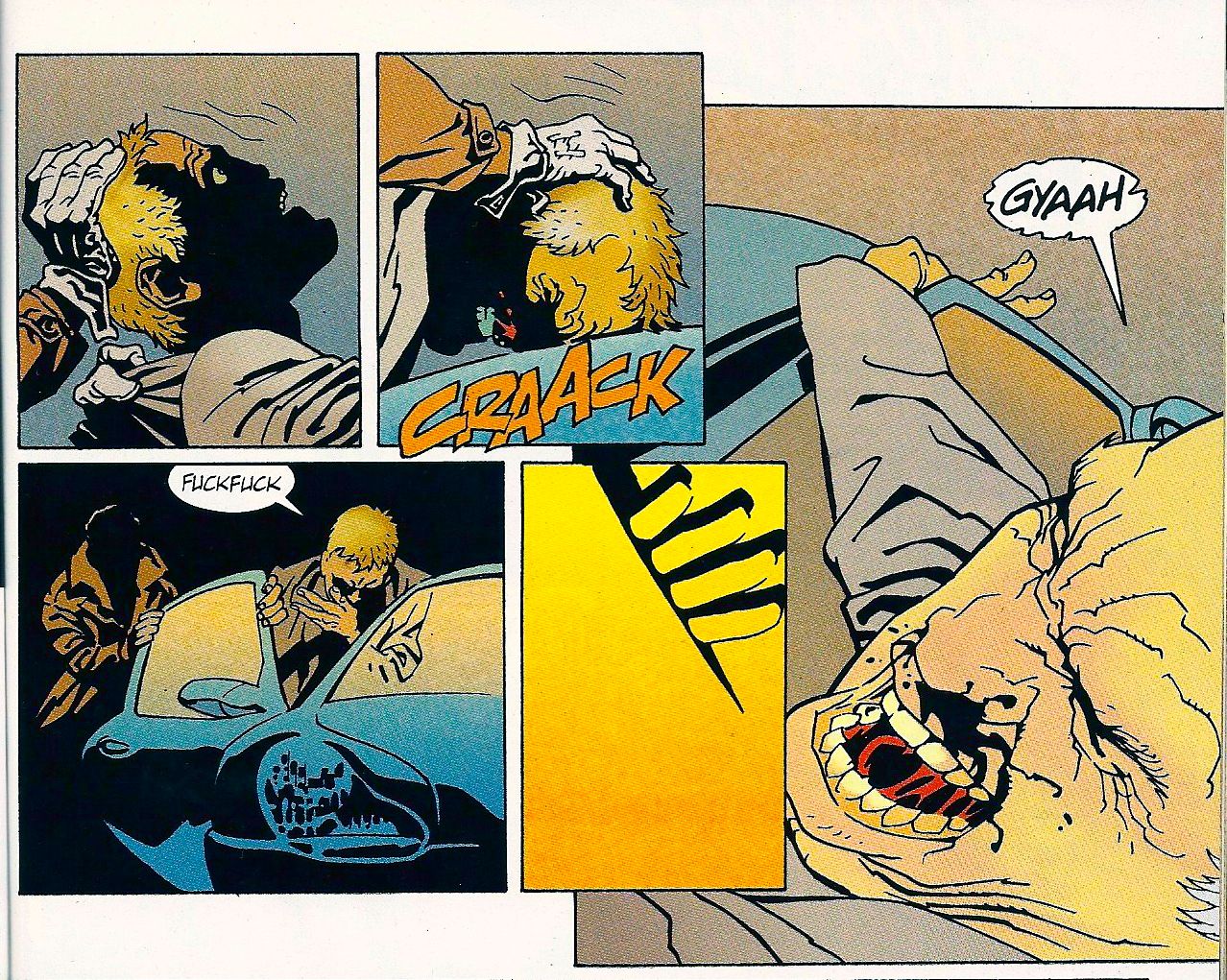Jonny Double #2 (1998), page 17 panels 1-5. Eduardo Risso.
The fight scene is like a litmus test for cartoonists. Of all the medium's conventions, only the gag strip comes close to the sheer amount of depiction fighting has been given in comics. Like the gag, most good artists can choreograph one effectively. What's much more difficult and much more rare is a fight that's both blocked out well and unique looking. Unlike gags, however, the fight scene is a very specific thing: impact shots of multiple human figures in motion, negotiating one another's presence in physical space. Again, just the number of times people fighting have been drawn into sequenced panels over the past century-plus of comics means it can be tough to find an acme for it that's truly one's own, completely untouched by anyone else.
So tough, in fact, that I don't feel 100 percent comfortable declaring this Eduardo Risso sequence to be completely his own. Though I've read my fair share of comics and never seen anything like it, the possibility always exists that somewhere in some moldering Toth back issue or barely-distributed Tim Vigil zine, the same exact route was taken into showing the same actions. That said, it's a great little piece of comics, and Risso bangs it out in a high style well worth examining regardless of its ultimate individuality.
Most notably, this is an action scene without any impact in the usual manner. Though there are two satisfyingly violent shots banged out in quick succession, neither of them is particularly vicious. In panel two, Risso freezes the frame right at the moment of impact, the tiny droplets of sprayed blood all that indicates the speed and force of the action depicted in the drawing. Panel four is impact driven right up to the border of abstraction, a few spurts of black that give little to no clue as to their subject by themselves, driving readers right into the next panel to make sure what they think happened actually did.
Even though there's not much typical Kirby/Ditko action storytelling going on here, there's still no shortage of advanced cartooning mechanics being thrown down. Rather than illustrate his impacts with starbursts and speed lines and exaggerated figure posings, Risso goes much subtler. It's the transition between the first two panels that really nails down the action, the near 180-degree rotation of the head in its closely cropped frame, terminating in the perfectly captured grimace of a man whose nose has just been broken. Similarly, the fingers slammed in the car door are accompanied by a shift all the way across the color wheel from a dominant blue to a dominant yellow, a flare-up so bright that it throws the digits into sharp relief, dropping thick slashes of shadow behind them. It's the same yellow that's bled into the agonized face that provides a blaring exclamation point for the sequence in panel five, linking the two panels beautifully despite their lack of the same angle or size.
All these choices indicate a highly individual approach to this particular fight scene. Rather than focusing on the action, Risso zeroes in on the pain, isolating the moments of greatest physical shock and blowing them up so deftly that they rival any more conventional punching shot. His expert use of such an unwieldy prop, a parked car, as the instrument of violence is just icing on the cake. As I said before, it's impossible to erase out the thought that someone, somewhere might have done an action scene like this before Risso -- but it's just about certain that they didn't do it this well.

